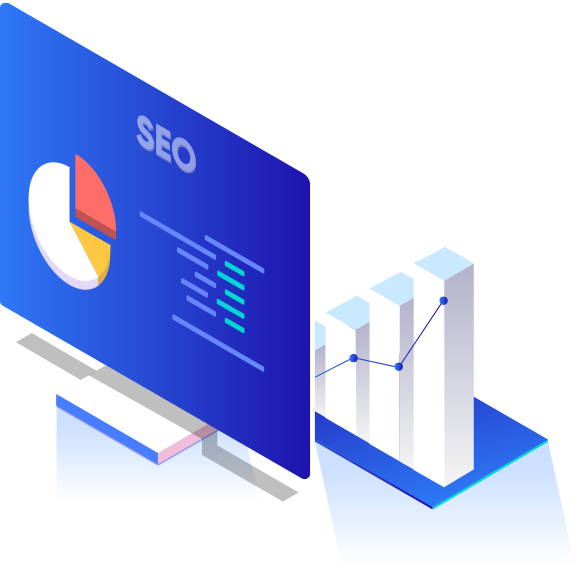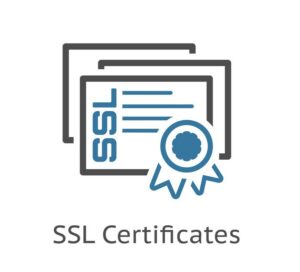SEO 101 - Search Engine Optimisation for Beginners
Definitions - Best Practices - Brief Guide | Reading Time: 15 Minutes
As easy as it looks for anyone to find, search and read about SEO on the internet, it's easier to get lost in the hundreds of thousands of articles and videos. This guide tries to tell you in the most simple way about SEO and helps in answering the question; where to begin? So, let's begin here.

What is Search Engine Optimisation (SEO)
Every business is about making profits. Isn’t it? And, as soon as eCommerce came into the picture, it became about your website making profit for you. As you do not have any posh location or mall to stand your website tall in front of all, Google becomes that location for you. Having top positions on Google is as good as having the best location for your office, like the Ground floor of a famous mall.
The set of techniques and efforts (optimisation) to get your website in the top position of a Search Engine (like Google) on any relevant keywords (search queries) is known as SEO.
Think of SEO as an art as there are no fixed set of rules, order or theorems. Sometimes it needs hit & trial methodology and sometimes it needs A/B testing. Sometimes it needs lots of patience and sometimes it falls for the Google dance (volatility in the positions of Keywords.).

It is to be believed that Google has some predefined 200+ parameters and it ranks the websites based on that. As Google keeps changing the algorithm (consider this as a formula or a mix of all these parameters) for ranking, one needs to remain updated about the same.
For me, Google is God. God of all the websites. There is no way you can please Google with some shady techniques and can’t fool it either. As we all know about all the righteous things and our self-conscience can easily tell us in case of any dilemma if what we wanted to do is right or not, the same way, we can judge for a website and can take a call if the same will get approved by Google or not. One doesn’t need to know the 200+ parameters to get a rank on Google. It’s all about doing the right things.


Keywords Research
Keywords, also known as search queries, are the phrases which you believe your prospects would be searching on Google before landing on your website.
Everything can move in the wrong direction if you don’t know on which keywords you wanted to rank on. If you choose the wrong keywords and start putting efforts in getting rank/position on Google for them, you may succeed in getting ranks but can fail big time getting business.
Understand this with a ‘Good location at Mall’ example. So, your shop sells electronics and you bought a shop at the best location of a Mall, which has only apparels shops and famous for the same, there are high chances you will run out of the business very first month. Finding the right keywords is the most important key to success in SEO. Most of the digital marketers fail at this very first step.


How to find the best keywords?
Every website has some keywords which are meant for them and getting top positions on these keywords can change everything for them. There is no fixed number of keywords one should have but let’s categorise them into two categories.- Primary Keywords
- Secondary Keywords
- Intent/Call to Action Do not choose all the keywords. Choose the one which only a prospective buyer would have been searching. So, if you sell shoes on your website, and someone searching “Leather Shoes”, then this is not a good choice to go ahead with. The person who is searching this might be looking for just images or anything else but an intent to buy. So, always look for keywords which have the intent to buy. It could be like “Buy Leather Shoes”, “Order Shoes Online” or “Leather Shoes Deliver Houston” etc.
- Searches’ Count These tools (Uber Suggest etc) will also tell you the ballpark figure of the number of searches happening on these keywords on a monthly basis along with the competition level. Usually, it is easier to get rank on low searches and while it should be tougher to get rank on high searches keywords. At the same time, low searches will get you low traction to your website while high searches will get you higher traffic. So, choose wisely.
- Location This is important to select the right location as your target market is. If you want to sell in the USA, and working on data based on the UK, can dilute the purpose of doing this whole exercise.


Title Tag & Meta Description
When you search something on Google, and the list of websites which you see are title tag and meta descriptions.

So, the purple-coloured (usually it is Blue) line is Title Tag, and the green is URL and the next two lines are Meta Description of that website.
Consider these details as the advertisement listing of your website and it needs to be perfect. Your visitors will visit only if they find this information relevant to their searches.
This is the most important aspect of SEO and you can’t mess it up. You need to write good Title Tags and Meta Descriptions for all your pages. If you have 100s or 1000s of pages, then start with the pages which have maximum traffic or conversion for you. Please follow the below rules:
- The length of the title tag should be between 40 to 60 characters including spaces.
- The Title tag should have the keywords used in it. Each Keyword should be used only once with no repetition. Also, the keyword should be used “as it is”, not in parts. So, if the keyword is “Send Flowers to India”, it should be used as it is.
- The Title should be written in phrases with the usage of Separators like “|” or “-“.
- The length of the Meta Description should be between 120 to 160 characters including spaces. Each Keyword should be used only once with no repetition. Also, the keyword should be used “as it is”, not in parts. So, if the keyword is “Send Flowers to India”, it should be used as it is.
- The Meta Description should have the keywords used in it.
- The Meta Description should be written in sentence format, preferably 2 sentences ending with a call 2 action like “Order Now”, “Buy Now” or “Try Now”, “Free Shipping” etc.
You should always make sure not to target the same keyword for more than one page. It means you should not use the target keywords in other pages’ title tag and meta descriptions.
So, like in this example, you can see that the website FlowerDesire.com is using its primary keywords for home page in Title tag and Meta description. The primary keywords are “Flower Delivery in India”, “Online Flower Delivery in India” and “Send Flowers to India”.
As these keywords are primary keywords, they are targeted only for the home page and not repeated on any other pages’ title tag and meta description.

Keyword in Content
One should always use the keywords for once in the body content as well, preferably in the H1/H2/H3 Heading Tag and in the first 5-7 lines of your page. If you are targeting 2-3 different keywords for the same page, try to use all of them in the first few lines.
You MUST NOT overuse the keywords on that page and considering the current scenario, I suggest to use it only once. You should use the synonyms (LSI) and part keywords throughout the page. So, if your target keyword is “Send Flowers to India”, you should use keywords like “Send Flowers”, “Send Roses to India”, “Send Bunches to India”, etc. You can also use “Flowers” word for 10-15 times throughout your content. Also, the synonyms or similar words of “Send”, which can be “Deliver”, or “Delivery” etc can be used in the whole keyword like “Deliver Flowers to India”, “Delivery of Flowers to India” etc.
This will give Google good signals of your page content’s authority and you will not suffer due to over optimisation by using main target keywords for more than once.
Repeat this process for all the pages.
Also, note that you should have 1000+ words on your home page and 400+ words in the inner pages of your website.



Mobile Responsiveness
60% of the Google searches were done over Mobile Devices in 2018 (source: https://www.wordstream.com/blog/ws/2019/02/07/google-search-statistics). You just can’t afford to lose this so make sure that your website opens very well without any issues with all types of mobiles and browsers and your website is fully responsive.
You can check the same over here: https://search.google.com/test/mobile-friendly
SSL Certificate
Whether you accept payments or not via your website, it is always recommended to use an SSL certificate on it. And once you apply, the SSL, make sure you check your websites opening perfectly fine and all the images are getting displayed correctly. If not, you need to fix the URL of the images from HTTP to HTTPS.


Page Speed
If you have a slow website, then you are already out of business. You can’t have a website which opens in lots of time (more than 4-5 seconds). In this competitive era, nobody has time to wait to see that irritation white screen which is nothing but a waste of time for users. So, make sure your website loads in no time on Desktop as well as Mobile.
You can check the page speed on https://developers.google.com/speed/pagespeed/insights/ or https://tools.pingdom.com
Broken Links
Make sure your website do not have broken links or pages which do not exist. You should fix them so that your website’s architecture remains solid. You can always check the broken links over here: https://neilpatel.com/ubersuggest/


Other On-Page Factors
- Do NOT use bold or strong text in your content. You should use headings though. Your website should look like a thesis which has H1 on the top, then some H2 Headings and then H3 headings and lots of normal text.
- Try to have same Whois information (domain information) which you have listed on your own website under contact details. You can check your Whois Info over here: http://who.godaddy.com
- You must have a working sitemap and should submit it to Google Search Console.
- Do not use small font size or foreground coloured text to fool Google. Remember, Google is God!
- Do not do Keywords Stuffing. Use variations and use them in sentences throughout the content. Do not just mention all the keywords in one sentence using commas or other separators.
- This is important to have a short URL. Whatever name you put to your page, make sure it is not very long.
- You should have a “privacy policy” and “terms of use” pages on your website.
- Make sure there are no duplicate title tags or meta descriptions available on the website.
- It is important that your website does not have thin (almost no or little content) pages.
- It is always suggested to have your website listed on Google My Business with the same address and phone number as listed on your website contact us page.

Off-Page Factors/Link Building
If On-Page SEO is the soul of your SEO efforts, consider Link Building as Blood Line. This is important and you can’t ignore it.
Link Building is a process where you try to get good links back to your website from some relevant websites which have high authority. So, think it like if you are selling some leather shoes and some websites who are into the business of selling sports shoes like Reebok or Nike mentioning your website on their blog. Wouldn’t it be cool?
So, Google tries to find which websites links/mentions your website and whether they have a high authority or not. Even, if that website is not into the same industry but having high authority, it can be very helpful for your business.
Remember, it is all about quality. So, if you get 10 links from High Authority websites and your competitor gets 1000 links from Low Authority websites, you are going to get a better rank for sure. Please read this again as this is where most of the SEO executives, even knowingly, commit mistakes.
High Authority Domains & Pages
Some call it as DA (Domain Authority) & PA (Page Authority), and some call it as DR (Domain Rank) and PR (Page Rank) but everything means same. It is all about having a high authority website which has a good reputation in front of Google.
To find that, you can use any chrome plugins or even tool like UberSuggest and they will tell you if the domain you are looking to get a backlink to your website has the high authority or not. Plus, they will also tell you the authority of that page, where you are going to get a link. So, if some website has a high Domain Authority and a high Page Authority and the same is relevant to your industry, it’s a big YES to get a link from the same. It is always good to have websites with 40+ DA/DR score to get backlinks from.
Anchor Texts
Anchor text is the clickable text in the hyperlinks where the websites put your link on it. So, make sure whatever your primary targeted keywords are covered under Anchor Texts. Also, if all your backlinks will have same anchor texts, then it won’t send a good signal to Google, so make sure you have 70% anchor texts with Primary Keywords, similar to primary keywords and your brand name and remaining 30% anchor texts should be from secondary keywords and other keywords.
You should always use your home page and other inner pages (other landing pages) as URLs which you will get links to in the ration of 70% and 30% respectively so that your inner pages too get some authority build-up through backlinks.
No-Follow – UGC – Sponsored – Do-Follow Links
Every website which gives you a backlink will classify the link as No-Follow, Do-Follow, Sponsored or UGC (User Generated Content). You should try to get maximum links from Do-Follow types. The best strategy to have the right mix of 70% Do-Follow and 30% others.
Do-Follow links are those links which tell Google that they are sponsoring you and you are recommended. No-follow, UGC & Sponsored links are those backlinks where you may or may not get any sponsorship. Google will consider them as hints and from 1st March 2020, we believe these links will have little or no value in the eyes of Google.
Classification of BackLinks
There are a number of ways you can create or get backlinks to your website. You should always classify websites into the following categories:
- Press Release Websites
- Blog Creation Websites
- Direct Blog Posting Websites
- Guest Blog Posting Websites
- Articles Posting Websites
- Profile Creation
- Forums (not recommended)
- Classifieds (not recommended)
- Directories (not recommended)
- Blog Post Comments (not recommended)
One should always try to find the websites which belong to its industry and classify them as per the above categories. One should restrict creating backlinks through Forums, Classifieds, Directories, & Blog Post Comments unless the same is super relevant. So, if you sell leather shoes, and there is a blog post about types of leather shoes or leather shoes designing with high Page Authority, you can look forward to getting a backlink from the same.
So, try to create some blogs, post some blogs and articles on existing relevant website with high authority, and create backlinks with the right mix of anchor texts and target pages.
Also, please note that you shouldn’t buy links and if you do, make sure that link says the same is sponsored. Remember, sooner or later, you will get caught for this and Google, being the God, will take action accordingly.
To get links through Email Outreach, please read this guide over here: http://ashishbiyani.com/guides/link-building-email-outreach
Also, to read how SEO executives should work on their first SEO project, click here: http://ashishbiyani.com/guides/seo-for-seo-executives


